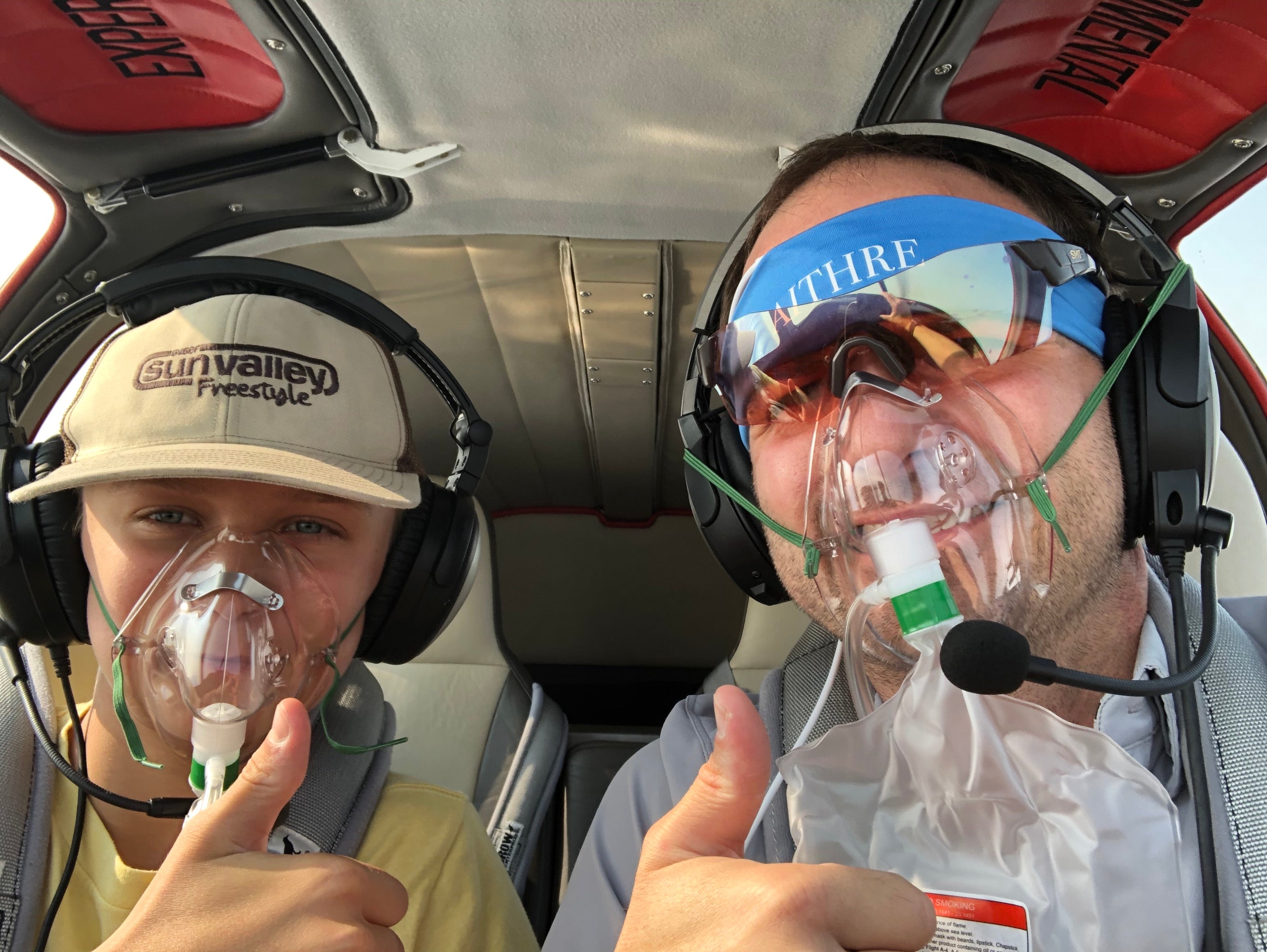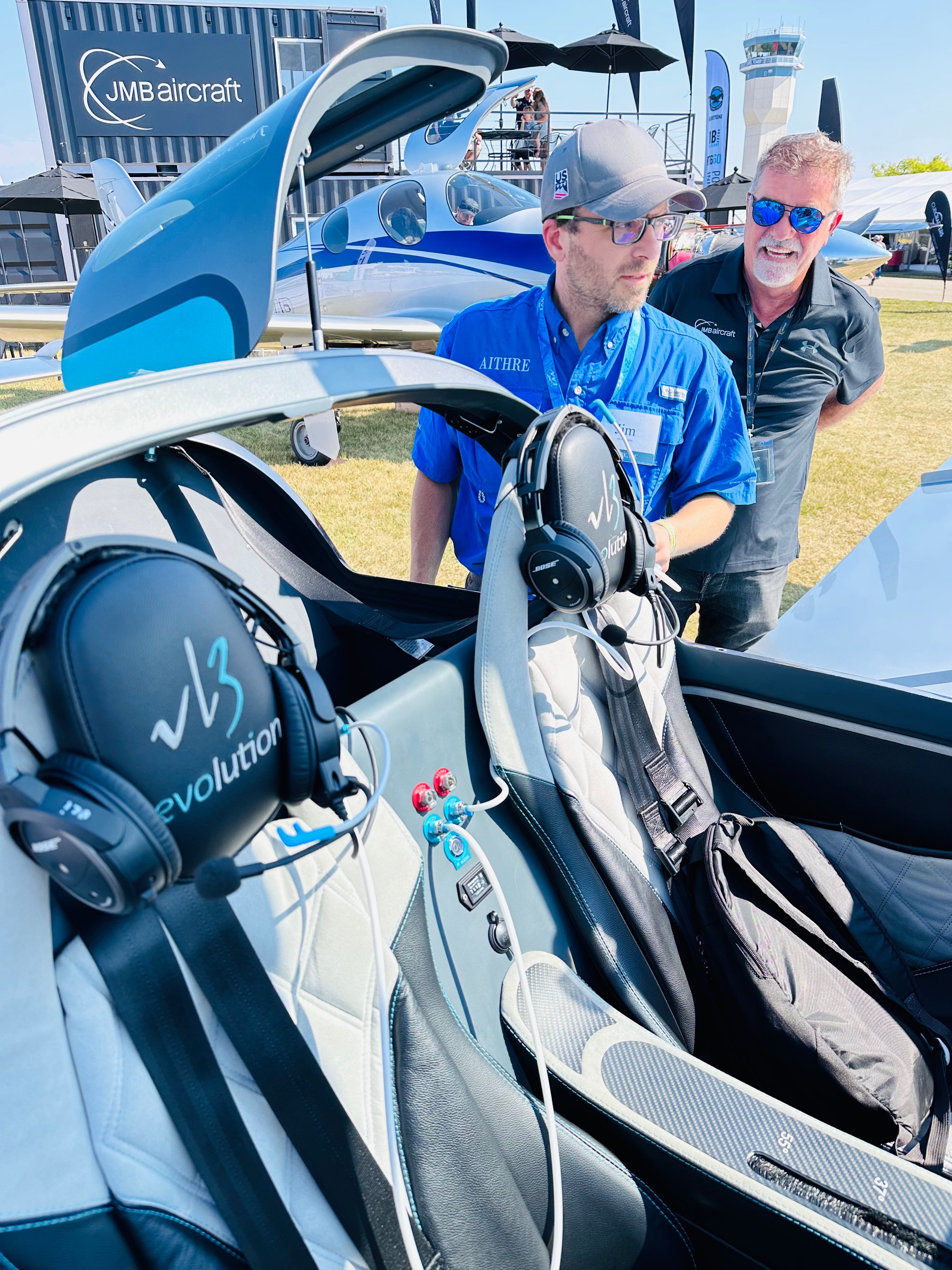Tired of cannulas everywhere in our RV-10, but enjoying the flexibility of portable oxygen - I wanted to figure out whether I could get the best of both worlds. That is, I wanted to use our portable oxygen tank with built-in plumbing installed. With a little research and effort, I am pleased to report that it can be done and works very well.
Background info.
Portable oxygen is great because you can take the tank in and out and use multiple different tanks. Moreover, you can get the tanks refilled easier by bringing them with you to the refill source or provider. Plus, it is just plain cheaper to use portable oxygen as opposed to built-in.
However, portable oxygen comes with the inconvenience of tangled cannulas being draped across everyone and everything in the cabin. And, the cannulas are long because of the distance that is required to get from each passenger to the tank, where ever that may be located.
Built-in oxygen has ports at each seat and a tank that usually goes in the trunk or behind a bulkhead. The plumbing is routed through the airframe and behind the walls. There is typically a remote valve control and remote pressure monitor that is hard wired from the tank to the front panel. Filling of the tank is done at the aircraft using a fitting in the fuselage.
Goal.
The goal was to provide fittings at each seat and then run plumbing from each fitting through the aircraft frame behind the walls to the trunk where they would quickly connect to a portable oxygen tank. The portable oxygen tank would be mounted to the aircraft frame in the trunk, but removable and disconnectable from the hoses. The valve would be manual to turn the tank on, but the oxygen flow rate would be controlled at each cannula. Also, the flow rate and oxygen pressure would be monitored remotely and wirelessly using our Aithre app and the Altus Meso.
Solution.
I found that Mountain High supplies oxygen fittings and tubing that can be used for this purpose. The fittings and hoses in this parts list are all that is required for a 4 place semi-built in oxygen system. Add the Aithre Altus Meso for $195 and cannulas having a built-in flow meter and you'll have everything you need.

Installation.
The installation was quiet simple itself, but requires that you remove all the interior panels wherever you are going to run the tubing. Simply drill holes for the quick connect fittings at each seat and screw in the quick connect fittings. Trim the hose to the required length and slide one end over the quick connect fittings. Run the hose to the place where the tank will be and insert a male quick connect fitting to that end of the hose for mating with the tank regulator itself. Do this for each seat. I used the hose track to hold the loose ends of the tubes when when not connected to the tank. The Altus Meso was installed on the tank to provide the wireless tank pressure and flow rate monitoring.
Outcome.
My family loves the oxygen system and the ease of use. I turn on the oxygen valve before takeoff and then have each passenger plug their cannulas in with 0 flow rate set on the individual cannulas (or keep the cannulas disconnected until reaching altitude). At altitude, the cannulas can be inserted and set to the correct flow rate. The remote monitoring allows me to see the oxygen use over time and make sure that everyone is safe without physically accessing the gauge.
Here are some pictures of the project so you can see how to do it yourself.









